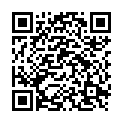|
|
|
| Module code: E608 |
|
2V+1U+1P (4 hours per week) |
|
5 |
| Semester: 6 |
| Mandatory course: yes |
Language of instruction:
German |
Assessment:
2 lab reports, written examination
[updated 12.03.2010]
|
E608 Electrical Engineering, Bachelor, ASPO 01.10.2005
, semester 6, mandatory course
|
60 class hours (= 45 clock hours) over a 15-week period.
The total student study time is 150 hours (equivalent to 5 ECTS credits).
There are therefore 105 hours available for class preparation and follow-up work and exam preparation.
|
Recommended prerequisites (modules):
E404 Electric Power Supply Systems I
E512 Power Electronics II
[updated 12.03.2010]
|
Recommended as prerequisite for:
|
Module coordinator:
Prof. Dr.-Ing. Stefan Winternheimer |
Lecturer:
Prof. Dr.-Ing. Stefan Winternheimer
[updated 12.03.2010]
|
Learning outcomes:
After completing this course, students will have a detailed understanding of power electronics. They will be able to select and model the most appropriate circuit for a specific problem and to dimension the necessary passive components.
[updated 12.03.2010]
|
Module content:
Disturbances caused by power converters:
Voltage distortion
Reactive power
High-frequency interference
Noise emission
Inverters:
Single-phase pulse-width modulation inverter
Three-phase pulse-width modulation inverter
The three-point inverter
Pulse-width modulation inverter in rectifier mode
Converters:
Voltage source converter
Current source converter
Simulation of power electronics systems:
Introduction to the SIMPLORER simulation software
AC power controller
Three-phase bridge connection
Buck converter
Lab course
Investigating AC power converters
Investigating the switching performance of a MOSFET
[updated 12.03.2010]
|
Teaching methods/Media:
Lecture notes, overhead transparencies, blackboard, SIMPLORER (student edition) CD-ROM, PC, video projector
[updated 12.03.2010]
|
Recommended or required reading:
Jäger Rainer, Stein Edgar: Leistungselektronik, 5. Aufl.,
Berlin / Offenbach: VDE-VERLAG, 2000
Jäger Rainer, Stein Edgar: Übungen zur Leistungselektronik,
Berlin / Offenbach: VDE-VERLAG, 2001
Mohan, Undeland, Robbins: Power Electronics 2nd Edition,
New York / Chichester / Brisbane / Toronto / Singapore: John Wiley & Sons, 1995
[updated 12.03.2010]
|


